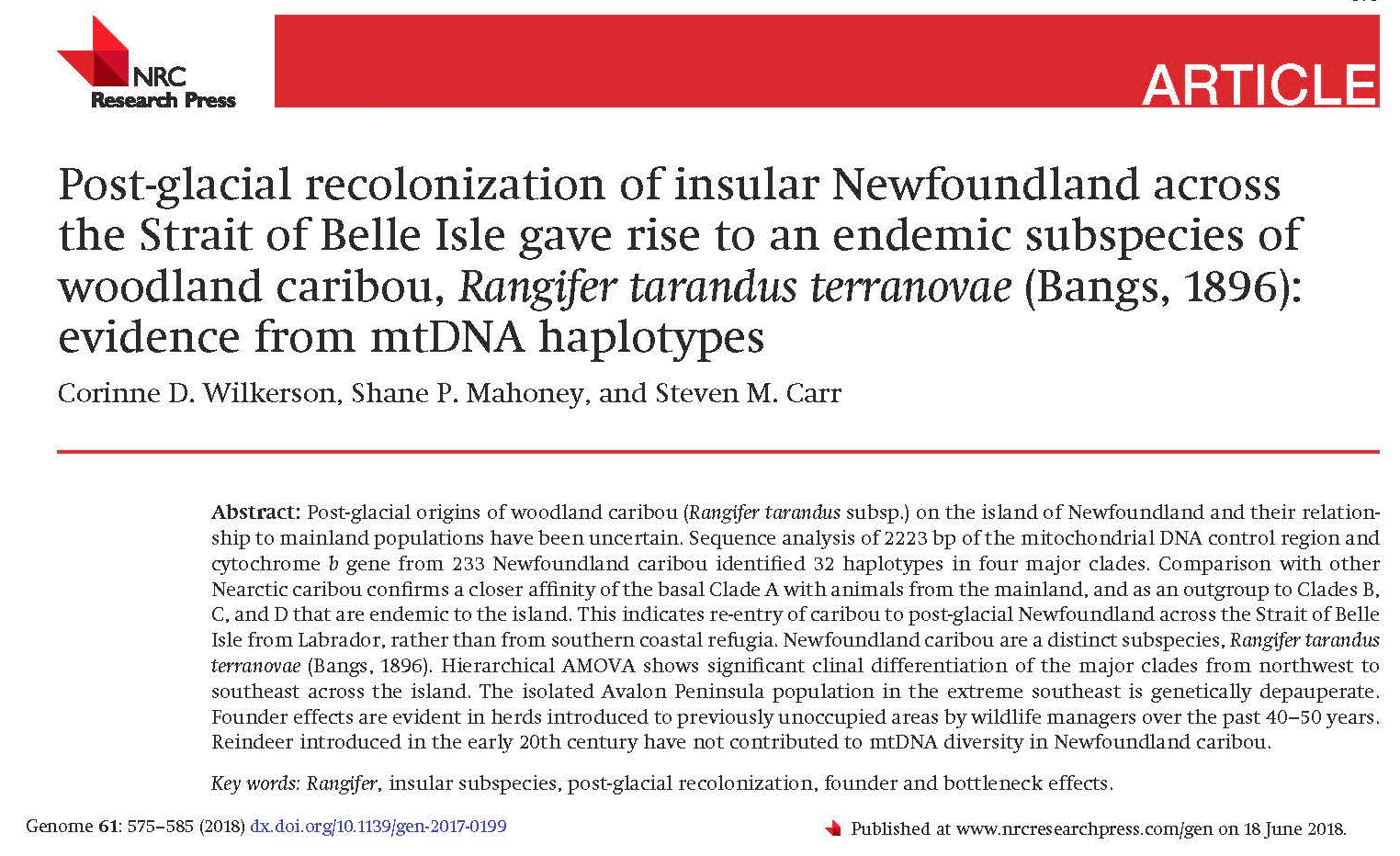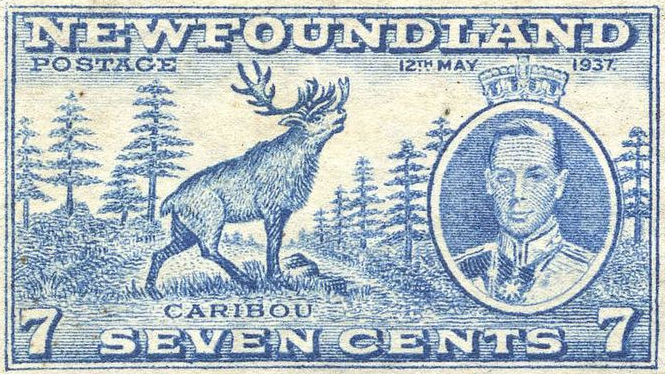

Mitochondrial DNA (mtDNA) sequence variation in Newfoundland Caribou:
a representative DNA data set for evolutionary genetic analysis
Wilkerson, Mahoney & Carr (2018). Genome, 61: 575 - 585.
"Like the rest
of Atlantic Canada, the island of Newfoundland, during
the last Ice Age, was covered by a thick layer of ice
and was uninhabitable until the retreat of the glaciers
around 10 000 years ago. A long-standing debate is
whether returning species survived this Ice Age in
mainland refugia, or on southerly island refugia such as
the Grand Banks. Genetic analysis of the ecologically
diverse Newfoundland caribou shows that they are a
distinct subspecies, most closely related to animals
from the northern mainland. Genetic exchange of island
caribou with Labrador populations may still occur across
the Strait of Belle Isle."
Table
1 - Genetic Clade & haplotype
counts across Wildlife Management Units
(WMUs)
Figure 1 - Maximum Likelihood analysis of phylogenetic relationships among Newfoundland Caribou haplotypes
Figure 1 - Maximum Likelihood analysis of phylogenetic relationships among Newfoundland Caribou haplotypes
Table
2 - Indices of Genetic diversity
among clades within WMUs
Figure 4
- Distribution of genetic
lineages (clades) among Caribou in Newfoundland
Figure 5 - Genetic models of herd organization across WMUs
Figure 6 - Genetic inferences as to re-colonization routes of Caribou to post-glacial Newfoundland
Figure 3 - Maximum Likelihood analysis of Newfoundland and other North American Caribou haplotypes
[This paper, based on the MSc thesis work of the senior author, Corinne Wilkerson, was given the Editor's Choice Award by the editors of "Genome," Canada's most prestigious genetics and genomics journal. The award recognizes the quality, clarity, and timeliness of research published in the journal].
Figure 5 - Genetic models of herd organization across WMUs
Figure 6 - Genetic inferences as to re-colonization routes of Caribou to post-glacial Newfoundland
Figure 3 - Maximum Likelihood analysis of Newfoundland and other North American Caribou haplotypes
[This paper, based on the MSc thesis work of the senior author, Corinne Wilkerson, was given the Editor's Choice Award by the editors of "Genome," Canada's most prestigious genetics and genomics journal. The award recognizes the quality, clarity, and timeliness of research published in the journal].
Abstract from Wilkerson et al. 2018; Additional text material © 2025 by Steven M. Carr